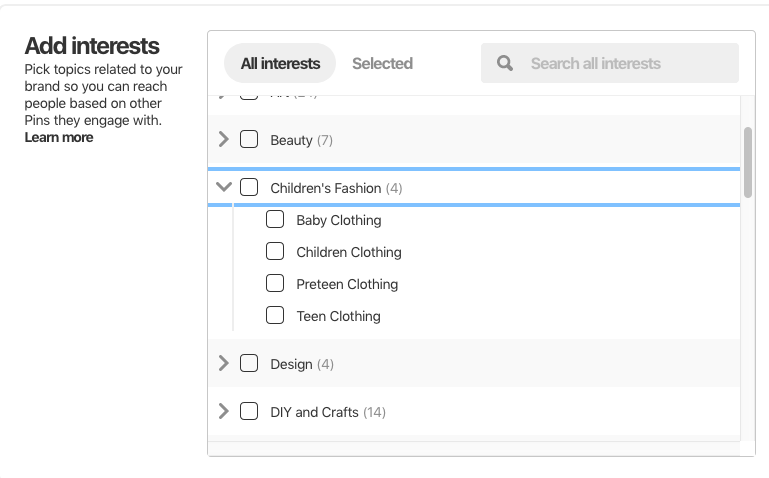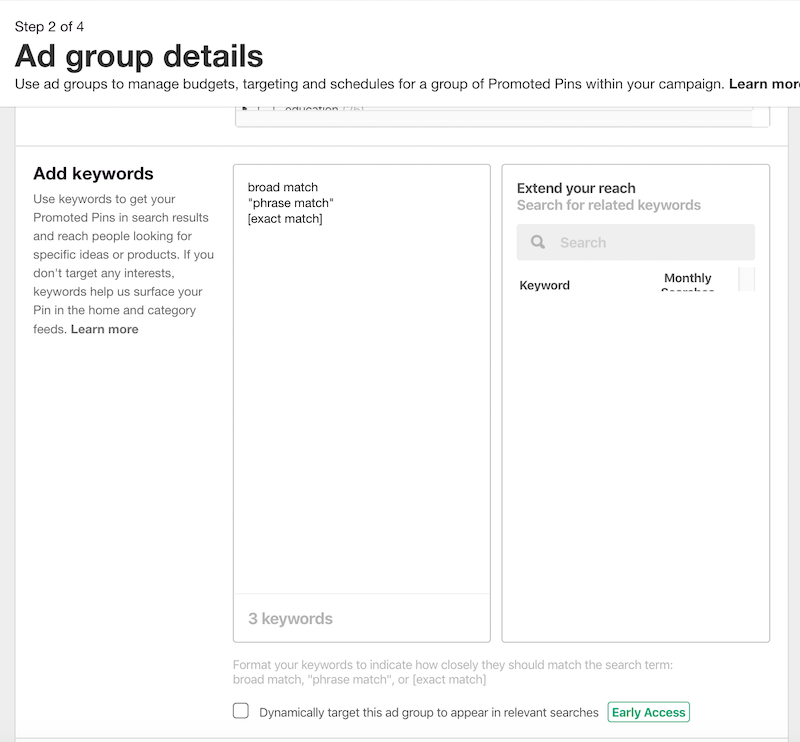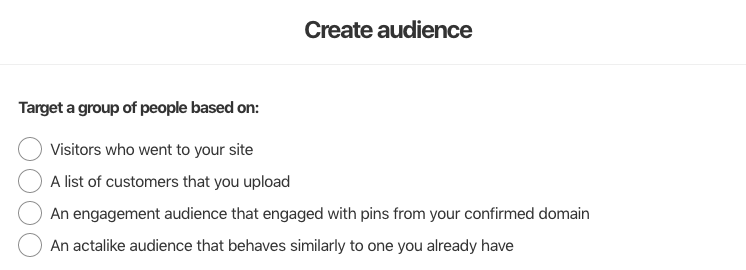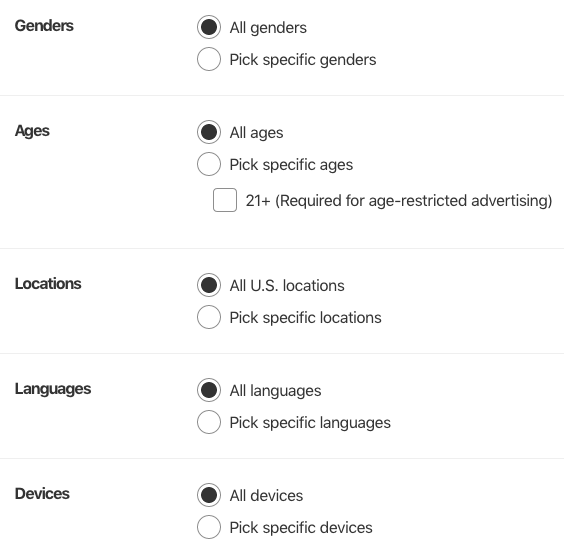Pinterest may have started as a network where users went for creative ideas and look at the beautiful image boards. However, over the years, the platform has evolved into a whole lot more — especially advertising possibilities.
Pinterest has refined its ad targeting capabilities to ensure that ecommerce advertisers can effectively reach the millions of people who come to Pinterest to shop for products and services.
Out of 93% of users who plan purchases with Pinterest, 87% of them ultimately buy, making Pinterest a lucrative advertising platform for ecommerce businesses.
So, what ad targeting options do Pinterest ads offer advertisers? Let’s find out.
What are the main Pinterest ad targeting options?
Pinterest offers advertisers multiple ad targeting options depending on who their audience is and how they want to reach them. For each ad group you set up, you can target ads to reach the right people at the right time. You can also combine targeting criteria to create an audience as narrow or as broad as you like.
Currently, there are three main ad targeting options: interest targeting, keyword targeting, and audience targeting.
Interest targeting
Interest targeting allows you to take advantage of Pinterest’s unique understanding of people’s interests, tastes, and life stages. Select interests related to your ad to reach people while they browse Pinterest for similar interests.
For example, if you’re selling baby clothes, target pinners interested in “children’s fashion” and “baby clothing,” or even “parenting:”

You can select broader terms to increase the ad reach, or you can select relevant sub-categories that target more specific options more relevant to your promoted products/services.
Keyword targeting
Similar to Google and Bing paid search ads, keyword targeting lets you include or exclude specific words to reach out to prospects as they search Pinterest for similar ideas. Advertisers can add keywords related to the ad they’re promoting, for instance, with patio furniture, you can target users searching for “patio decor” or “home decor ideas.”
The key to succeeding with keyword targeting is to make sure any keywords you add are relevant to your pin.
Also, similar to search engines, Pinterest offers multiple keyword match types such as broad, phrase, and exact, along with negative keywords. Each match type, combined with negative keywords enables you to target pinners’ search terms and be more precise with ads:
- Phrase and exact matches — to narrow in on specific searches
- Broad match to reach the widest audience
- Negative keywords allow you to exclude certain search terms from triggering ads and can be set at the ad group or campaign level.
When adding keywords in the Ads Manager, write a keyword as is for broad match, use quotations around the keywords for phrase match, and include brackets around keywords for exact match:

Audience targeting
With audience targeting, you show ads to Pinterest users who are most likely to click and engage with the ads.
This option is best in practice with retargeting ads because you can target the ads to website visitor list, customers from your CRM, or people who have already engaged with your brand on Pinterest. Once you’ve identified your most valuable customers, you can use actalike audiences (similar to Facebook lookalike audiences) to find other people with similar interests and behaviors.
The option also allows you to boost traffic by sending pinners/prospects to your Pinterest post-click page, website, or online store.
With audience targeting you can create four types of audiences:

- Customer lists: Upload existing customers’ emails or mobile ad IDs (MAIDs) through a single column CSV file. Once you compile at least 100 matches, Pinterest will begin targeting those people with your promoted pins.
- Website visitors: The audience list includes people who have already visited your site or Pinterest content. To create visitor audiences, you need to set up the Pinterest tag, add the base code across every page on your site, and add the event code to pages you want to track the actions important to your conversion goal. To track events, you can retarget people who added a specific type of product to their cart but didn’t ultimately purchase.
- Engagement audience: You can target people who’ve previously engaged with pins from your website. This includes saves, closeups, comments, link clicks, and carousel card swipes. Add filters to your engagement audience to target or exclude people who take specific actions, such as saving your pin.
- Actalike audience: Pinterest builds actalike audiences using information you give them about people on Pinterest and their behavior. Choose one of your existing audience lists as the source audience to build your actalike. You have the option to target people in a specific country based on the source audience and choose a target size percentage. Actalike audiences are used to find new customers, new people who are likely to engage with your pins, or new people who are likely to visit your website based on the source audience.
Additional targeting
In addition to those three methods, you can also choose who to target based on gender, age, locations, languages, and devices:

The key is to select the targeting options based on your offer and which prospects might be interested in it. For example, select people in the correct locations that speak the language your ads are written, also determine which device your prospects are likely to be using on the platform.
Harness the power of Pinterest targeting to reach potential customers
Pinterest’s ad targeting options help you locate the right audience on the platform and ensure your ads are targeted to users that will likely click through.
To increase the likelihood of ad clicks turning into conversions, always connect your ads with personalized post-click landing pages. To create personalized experiences for all your ads, get an Instapage Enterprise Personalization demo today.

See the Instapage Enterprise Plan in Action.
Demo includes AdMap™, Personalization, AMP,
Global Blocks, heatmaps & more.
